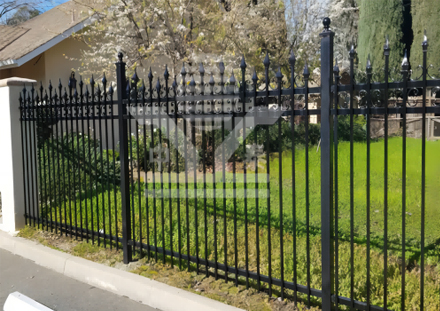Understanding Bar Grating A Versatile Solution in Modern Engineering
Bar grating, also known as metal grating or simply grating, is a type of building material widely used in various engineering and architectural applications. Composed of a series of parallel bars or metal strips, bar grating offers a combination of strength, durability, and versatility, making it suitable for different settings, from industrial facilities to commercial buildings.
One of the primary attributes of bar grating is its ability to provide excellent drainage and ventilation. The open design allows water, air, and light to pass through while supporting considerable loads. This feature is particularly valuable in environments where safety and hygiene are paramount, such as in food processing plants, chemical facilities, and wastewater treatment plants. In these scenarios, bar grating helps reduce the risk of slip hazards while facilitating effective drainage.
Bar grating comes in various materials, including steel, aluminum, and fiberglass. Each material option has its advantages. Steel grating is typically the most robust, able to withstand heavy loads and harsh environments, making it ideal for industrial applications. Aluminum grating, on the other hand, is lightweight and resistant to corrosion, making it suitable for both indoor and outdoor use. Fiberglass grating, known for its non-conductive properties, is often utilized in environments where electrical hazards may be a concern.
bar grating

Another significant advantage of bar grating is its customizability. Manufacturers can produce grates in different sizes, shapes, and styles to meet specific project requirements. This flexibility allows engineers and architects to integrate grating solutions seamlessly into their designs, whether for walkways, platforms, or stair treads. Additionally, bar grating can be coated or painted to enhance aesthetics or protect against environmental factors.
The installation of bar grating is generally straightforward, although it requires careful planning to ensure proper load distribution and safety. Regular maintenance, such as inspections and cleaning, helps to sustain its structural integrity and prolong its lifespan. In many cases, bar grating components can be easily replaced if wear or damage occurs, minimizing downtime and extending the lifecycle of the overall structure.
In conclusion, bar grating represents a practical and efficient solution for diverse engineering and architectural needs. Its strength, versatility, and ease of maintenance make it an indispensable component in various industries. As technology advances and designs evolve, the role of bar grating will likely continue to expand, offering innovative solutions for sustainable and safe construction practices. With an array of materials and customization options available, bar grating is poised to remain a key player in modern engineering.
-
Versatility of Expanded Aluminum Metal for Various Applications
NewsMay.19,2025
-
The Geometry of Steel Gratings: Why It Matters
NewsMay.19,2025
-
Reinforcement Applications of Perforated Mesh in Masonry
NewsMay.19,2025
-
Essential Tools for Installing a Deck Mesh Railing
NewsMay.19,2025
-
Anti-Slip Flooring Made with Stainless Expanded Mesh
NewsMay.19,2025
-
Adjustable Steel Grating for Uneven Terrain
NewsMay.19,2025
Subscribe now!
Stay up to date with the latest on Fry Steeland industry news.

